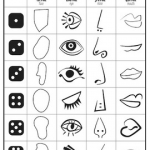Thriving Under Pressure: Smart Strategies for Managing Explosive Business Growth
(Guest post by Susan Booker) The sudden growth in your small business can be both thrilling and overwhelming. Managing this exciting phase effectively requires adopting strategic approaches that support sustainable success. Enhancing your business skills, fostering team collaboration, and leveraging technology are key steps to navigating expansion smoothly. By staying organized and proactive, you can maintain stability while capitalizing on new opportunities, ensuring your business thrives during this dynamic period of growth.
Reinvest Profits for Sustainable Growth
Reinvesting profits into your business is a smart strategy to fuel sustainable growth. You can enhance productivity and foster innovation by directing funds towards areas like research and development or employee training. Financial tools such as budgeting software help you make informed decisions about where to allocate resources, ensuring your business remains competitive and adaptable.
Train Strategically for Sustainable Business Growth
Implementing scalable training programs is essential for addressing the skills gap and preparing your workforce for future demands. By investing in employee development, you not only improve retention and satisfaction but also drive innovation and profitability. Platforms that offer tailored solutions for skill assessments can help you accurately evaluate and enhance your team’s capabilities, ensuring your business stays ahead in a rapidly evolving landscape.
Boost Your Business Acumen with an Online Degree
Enhancing your business knowledge is one of the most effective ways to prepare for rapid growth. Earning an online business degree can equip you with essential accounting, business, communications, and management skills. This may be a good option to check if you want to improve your leadership capabilities while maintaining your current job. The flexibility of online programs allows you to work full-time and keep up with your studies, making it a practical choice for busy entrepreneurs.
Harness Cloud Scalability for Small Business Expansion
Adopting scalable cloud-based systems can significantly ease the complexities of rapid growth. These systems allow you to dynamically adjust your data storage and processing capabilities, meeting increased demand without hefty infrastructure investments. During peak times, cloud solutions can automatically scale to handle higher traffic, ensuring smooth operations and enhancing collaboration among remote teams. Choosing cloud providers with strong security measures ensures your sensitive information is protected while enjoying the benefits of cloud technology.
Leverage Personalization for Sustainable Growth
Crafting personalized loyalty programs is a strategic way to nurture customer loyalty and manage growth effectively. By utilizing customer data and CRM systems, you can tailor marketing efforts to align with individual preferences, offering a unique experience for each customer. This approach encourages repeat purchases and promotes word-of-mouth referrals, expanding your customer base and turning satisfied customers into passionate brand advocates.
Adapt Your Business Model for Global Success
To manage rapid growth successfully, it’s crucial to adapt your business model to diverse markets. Customizing your products and marketing strategies to fit local consumer preferences and cultural nuances can broaden your brand’s global reach. Partnering with local experts and conducting thorough market research helps you navigate regulatory requirements and avoid common pitfalls, ensuring sustained growth and increased sales.
Perform a Competitive Analysis
Conducting a thorough competitive analysis is essential for navigating the challenges of rapid growth. By examining larger and smaller competitors, you can uncover successful strategies and identify potential threats to your market share. This approach provides insights into industry dynamics and helps you anticipate future shifts, enabling you to make informed decisions that enhance your product development and marketing strategies.
These strategies can set your small business on a path to lasting success. You ensure your business stays competitive and adaptable by honing your skills, strategically reinvesting profits, and adopting technological advancements. These proactive steps prepare you to face future challenges and create growth opportunities, helping your business thrive in an ever-evolving market landscape.
Susan Booker founded Side Gig Success, a vibrant online platform designed to empower individuals striving for financial freedom through side businesses. Side Gig Success serves as a guiding light for those eager to turn their passions into profitable ventures, offering practical strategies and expert advice to navigate the challenges of launching and growing a successful side hustle. With her innovative approach and actionable insights, Susan has cultivated a community where aspiring entrepreneurs can transform their dreams into reality and build a more financially secure future.
When Susan isn’t busy refining her website or managing her own side businesses, she enjoys attending yoga retreats, exploring local museums, and expressing her creativity through painting and writing.








Follow us online!